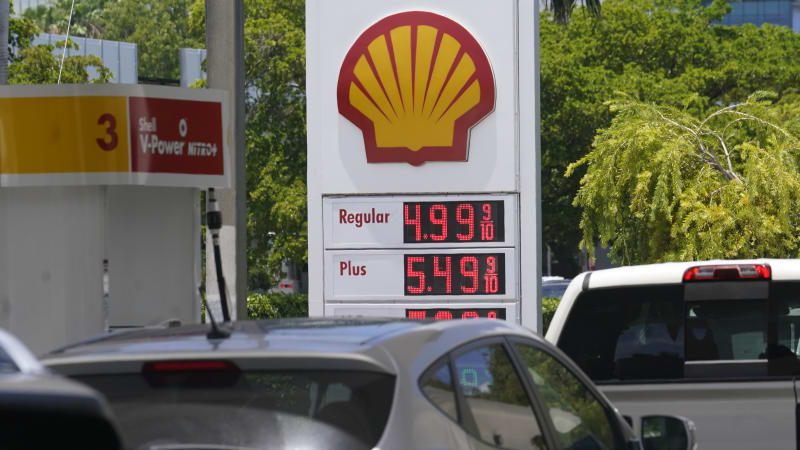U.S. gasoline prices dip ahead of Biden gas-tax relief plan

President Joe Biden is planning to waive a federal gasoline tax to help Americans battling surging inflation. But prices have already dropped from record highs amid fears of a recession and signs of easing demand.
US gasoline futures are about 13% below the record high seen earlier this month and pump prices have dropped for more than seven days straight — the biggest run of losses since April — after rising to a fresh peak early last week, as recession concerns grip the market. Oil prices have tumbled toward $100 a barrel as traders fear that sharply higher interest rates would slow down economic growth and lead to demand destruction.
The AAA reports that the average price of a gallon of regular gas slipped 6 cents since last week, to $4.955 on Wednesday.
“The recent high prices may have led to a small drop in domestic gasoline demand as fewer drivers fueled up last week,” said Andrew Gross, AAA spokesperson. “This dip, coupled with less costly oil, has taken some steam out of surging pump prices. And this is happening right before drivers gas up for what AAA forecasts will be a busy July 4th travel weekend.”
The 10 largest weekly decreases: Indiana (−.10), Florida (−.09), Wisconsin (−.09), South Carolina (−.08), Ohio (−.08), Maryland (−.08), New Jersey (−.08), Michigan (−.07), Kentucky (−.07) and North Carolina (−.06).
Surging inflation has governments around the world struggling to find ways to provide relief to taxpayers. On Monday, Biden said he’s considering a federal gas tax suspension and will announce his decision by the end of the week. If enacted, the move would waive the 18.4-cent national tax currently tacked onto gasoline sales but ultimately will do little to bring down prices, market participants said. It’s unclear whether the legislation will have enough votes from lawmakers to pass.
The summer driving season, which began with the Memorial Day weekend at the end of May, saw fuel consumption rise to the highest year-to-date level. But since then gains have lagged prior seasonal levels, stoking concerns that elevated prices are holding some travelers back. That trend seems to be continuing, adding to weakness in prices.



